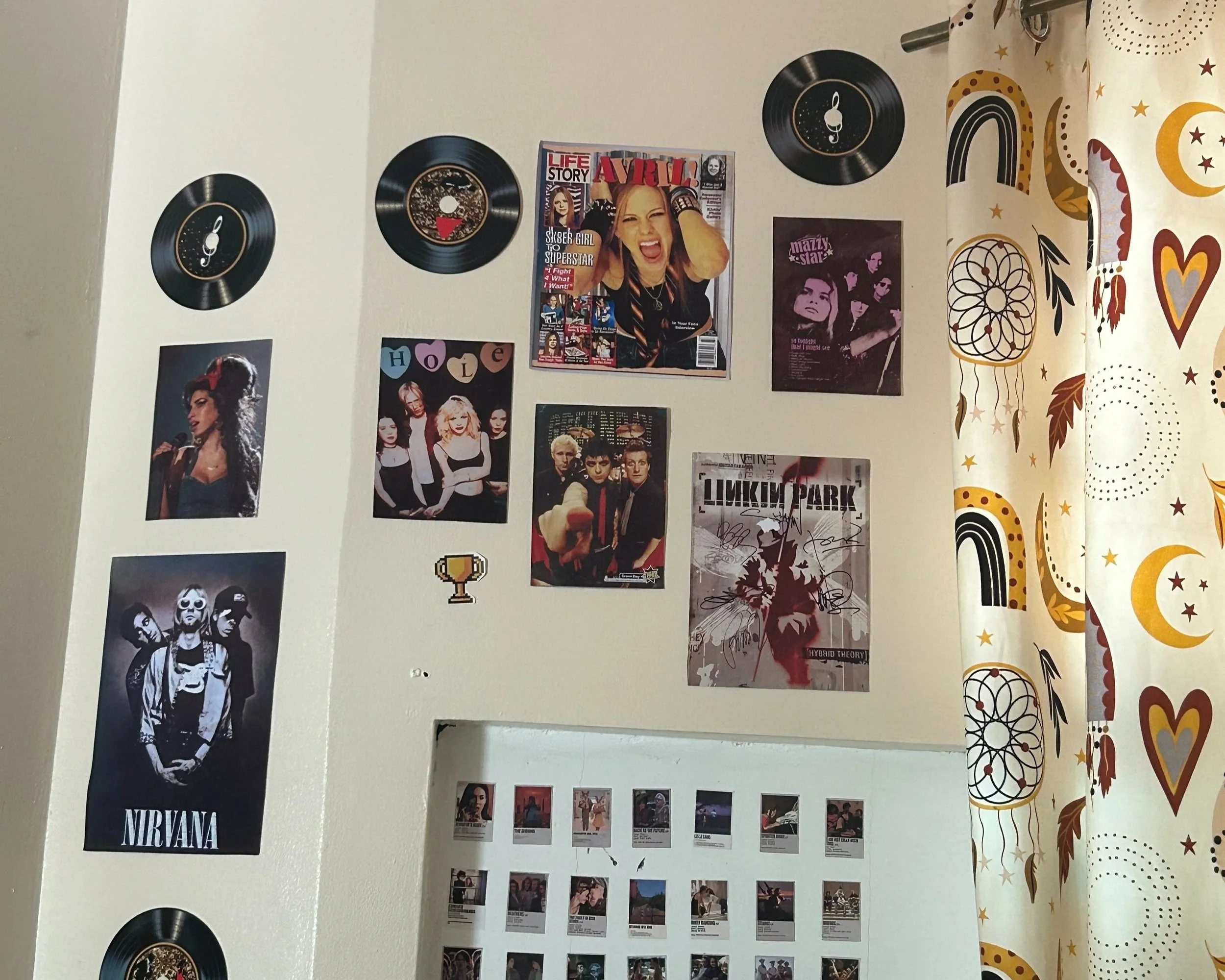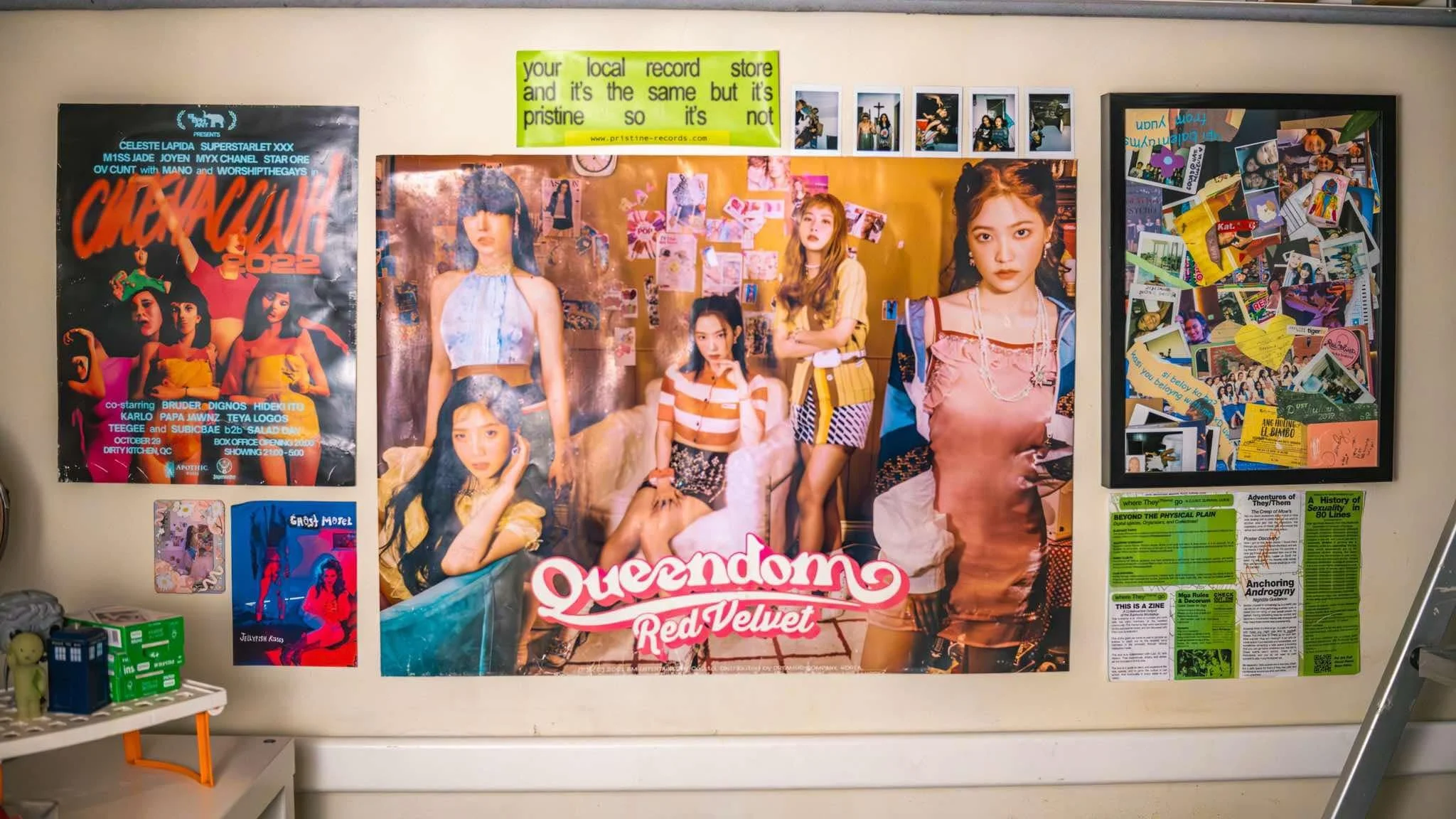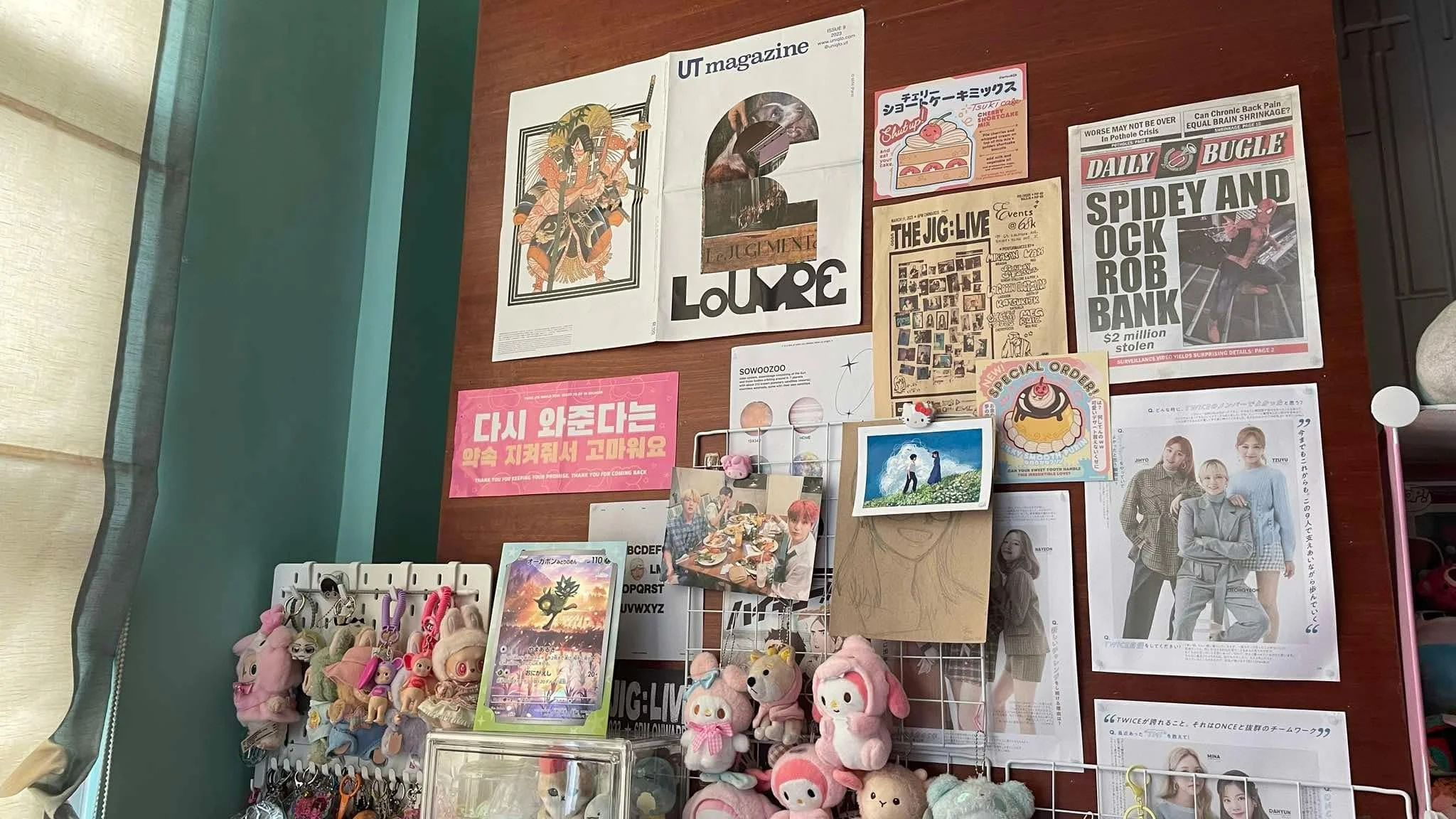The Culture of Hanging Posters
Inspired by coming-of-age films, the posters young people hang on their walls are more than decoration—they’re a reflection of their identity.
Words Yra Luis Gener Gutierrez
Photos Beige Encarnacion, Luci Garcia, Ella Soliva, & Amanda Quintos
March 30, 2025
If bedroom walls could talk, they'd reveal a young person’s journey of self-discovery. A room, filled with personal mementos and designs, becomes a refuge and a reflection of their identity.
The visual culture of coming-of-age films and DIY room decor trends on platforms like YouTube and TikTok has empowered young people to shape their personal spaces.
Beyond the Screen
In coming-of-age films, a character's bedroom often features walls plastered with posters, making them a crucial part of understanding the character's identity. These posters—of bands, movies, artwork, and book quotes—tell a personal story.
Take Lady Bird (2019), for example. Greta Gerwig’s film uses the main character’s bedroom walls to express her personality and passions. The posters and artwork in her room reveal her inner world, offering the audience a visual narrative of who she is.
This tradition extends beyond film. Young people have long used posters to personalize their spaces, creating environments that reflect their identities and the things that matter to them.
As Representation
Luci Bernard Garcia shares with Art+ Magazine that her posters are reminders of great days. “They are just a huge reference and point of retrospection for both my art and my journey as a person,” she says. “They’re tangible representations of things I do and the people we associate ourselves around, all taped onto my bedroom, one of the few places where I can freely express myself at home.”
The posters she hangs on her bedroom walls are either made by her or from events she has attended in the past. “The posters that aren’t made by me are connected to my interest in pop culture. Red Velvet poster, Elephant Party’s ‘Cinemaccluh,’ and a poster from my friend Jolly’s thesis exhibition about the spectacle of queerhood,” Luci explains.
One of the posters, from her friend’s thesis exhibition, sits in a corner near her clothes. “It’s a reminder in some sense that I should be more mindful of how I present myself and why I present myself like that,” she emphasizes. “I should present and be a spectacle for my own entertainment and liking.”
Looking back, Luci traces her interest in posters to the media she consumed. “It’s an amalgamation of different media,” Luci notes. “Definitely coming-of-age media is a huge reference for me. I wish my bedroom looked as grunge and explosive as theirs.”
Similarly, Ella Soliva views posters as a tool for personal representation. “I hang mostly music posters as a representation of my crippling addiction to music,” she says. The 21-year-old is passionate about 70s and 80s classic rock, along with 90s grunge, among other genres. “Rock music makes me feel alive,” she shares. “I can say that rock culture has the biggest influence on me. Hence, why I love hanging posters in my room,” Ella adds.
Ella recalls that it was her favorite “teenage dirtbag” characters, namely Rodrick Heffley and Anna Coleman, who inspired her room’s design. “Growing up, I always wanted to have a room like theirs because I thought it was cool and creative.”
Extension of Identity
While posters serve as a form of representation, for some young people, they also become an integral part of their identity. “Seeing artwork made by talented artists, posters of my favorite pieces of media, and the faces of my loved ones plastered in my room makes me happy and inspires me to create art,” says Beige Encarnacion. “I like to surround myself with artwork that represents my identity,” she adds.
The 19-year-old has covered her walls with a mix of art pieces and photo strips. “I usually get my posters and prints from local artists and friends,” Beige shares. She began this practice during the pandemic. “I printed out album covers of my favorite artists during those times and posters I found online,” she recalls.
Beige’s connection to this culture began with the media she watched growing up. “It would be some TV shows and films from my childhood like Gravity Falls, Freaky Friday, and 10 Things I Hate About You,” she shares. Currently, Beige has posters of Remington and the Curse of Zombadings and Fleabag.
Amanda Quintos shares a similar sentiment: “I think I identify with the art that I like to put on my walls,” she says. “When I put up K-pop banners from concerts, they become a memory collage that I want to see every day,” she explains. “I’m also the type of person who likes to put motivating lyrics on my wall, specifically from my favorite artists.”
Amanda collects K-pop posters and prints from art markets she attends, but she also has a deep interest in films. “I think they are [posters] mostly from movies, especially animated ones,” she says.
Quintos began decorating her walls at a young age, starting with her own drawings. “At least every artwork I made, I glued it on the wall,” she recalls. Over time, she began sticking free posters from magazines like K-Zone and Total Girl.
While she acknowledges the influence of films, for Amanda, it goes beyond that. “It’s just an instinct to put something I appreciate on the wall,” she explains. “It’s the same thought process as when we put things in the fridge for our parents to see.” The 21-year-old adds that for her, it’s about sharing what she values with the people around her.






